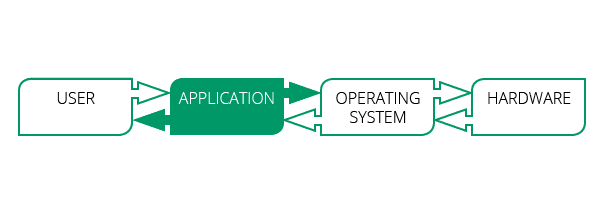Appification of the Enterprise Explained
By Team Arrk |
|
4 mins read |

The phrase “there’s an app for that” has been well-established among consumers for years – we’re accustomed to the idea of being able to download an app for almost any purpose, leading to buzz terms like “the appification of everything” and the “appification of the web”. However, now this concept has spread to enterprise applications.
According to a new report from Flexera Software, a transformation is taking place in the way that intelligent device makers, such as IoT manufacturers, and software vendors can profit from appification.
What exactly is the appified enterprise?
Whether it’s booking business trips, managing meetings or organising notes, there are a host of ways in which apps help us to boost our productivity during the day. Now the “appification of everything” has firmly arrived in the workplace: but in order to genuinely benefit from these changes it is necessary for producers to re-examine how they look at their business model in terms of enterprise software.
For example, employees are searching for task-oriented applications which can perform specific functions. It might be executing a stock trade for a client; or it might be launching an email campaign. Timesheets are an obvious example: with companies such as Harvest and Toggl creating their own apps to make the timekeeping process easier than ever. The idea is that employees simply enter the time they spend working on activities while the app then automates everything else such as calculating total hours or submitting them to an employer.
While the popularity of these apps increases rapidly, employees are looking for further apps that will help achieve goals and negate the need to navigate across a full application suite with broad functionality.
Now it is up to producers to be savvy in how they license the software. They need to enable customers who are demanding this software, but also look for ways to monetise these apps using a licensing model that allows for payments that are focused on the way in which the software is used.
So how can producers monetise their apps?
There are many software models that can be used to monetise app-based software, such as software licensing models that focus on the task and subsequently capture revenue. There are meters for time, transaction numbers, bytes transferred and usage: all of which could be used.
Here are some examples of how they could be applied:
- A company which offers email marketing and email hosting software could potentially charge customers based on the number of email boxes they set up. They could also charge based on the number of emails sent.
- Device makers that focus on intelligence, such as the internet of things, can monetise hardware which is powered by apps by charging for rentals or receiving payments which are based on the features of the drones that are being used or the time period for which they are used.
- For software providers that offer DNA sequencing software, they could potentially charge for the number of gigabytes, or data, which is processed.
In all of the above examples, the software is used with the goal of achieving a specific task. The vendor is able to create an app and then implement it using a monetised licensing model which is built around its use.
Are companies actually getting on board with the appified enterprise?
According to the report by IDC and Flexera Software, it appears that companies are gradually jumping on board with the appified enterprise concept.
It reports that 17 per cent of producers are now offering licensing models for their utility software: a rise from nine per cent during 2014. Indeed it is also predicted that this number will expand further: to around 23 per cent in the coming two years.
The second stage of appification…
While monetising apps is one important stage in this appification enterprise, there is a second stage that also needs to be addressed. This is the fact that employees also want to reduce unnecessary complexity: giving them the ability to both download and activate their applications as quickly as possible.
As such, many companies are now looking at a Google Play/iTunes style offering: which will allow employees to activate the software using a one-click model rather than the more complex, traditional methods such as website or email activation that require several steps.
According to the Flexera Software report, it seems that producers are indeed attempting to support the appified enterprise by offering more in-product software activation. Around 44 per cent of those surveyed suggested that they are now including keys/filters allowing which allow for in-product activation.
Is your company ready for enterprise appification?
The emphasis is now on software producers to change how they package and license their apps to capitalise on this transformation of the appified enterprise. The focus is now on simplicity and flexibility – and by offering apps which are task-oriented and feature in-product activation they will be addressing employee needs.
There is no doubt that enterprise appification is firmly under way – and addressing the same needs as those in the consumer marketplace will be the key to achieving success.







